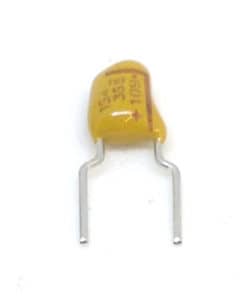 I’ve previously said that:
I’ve previously said that:
“the capacitor is kinda like a small rechargeable battery with very little capacity”
But what is that good for?
One example is to blink a light.
To blink a light you need some kind of circuit to switch a light on and off.
But, you also need something to make sure that when the light is on, it stays on for a bit of time.
And when it’s off, it stays off for a bit of time.
Otherwise, it would just be switching so fast that it would seem to be halfway on all the time.
This is the perfect job for the capacitor.
Because a capacitor needs time to charge and discharge.
So it introduces a time delay into the circuit and thereby slowing down the light-blinking circuit to a reasonable blinking speed.
Another example is “emergency power” for circuits.
If a power supply does something power intensive – such as turning on a relay – it might have a drop in voltage for a very short time.
If that same power supply is powering a circuit that is very sensitive for voltage drops, then the capacitor comes to the rescue.
Since the capacitor can store energy, it can keep the voltage stable for a short time when the voltage supply can’t.
Learn about practical circuits where you need a capacitor from Ohmify:
Keep On Soldering!
Oyvind @ build-electronic-circuits.com
Copyright Build Electronic Circuits
No comments:
Post a Comment